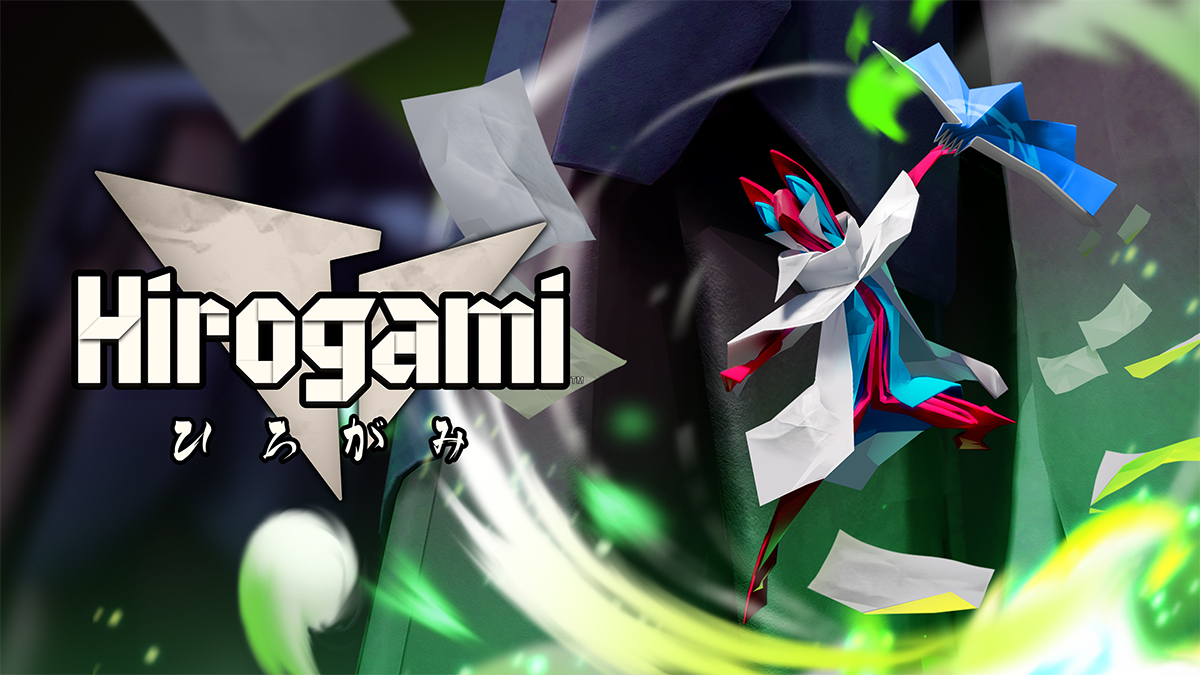
Hirogami is a 3D action platformer game developed by Bandai Namco Studios Singapore and Bandai Namco Studios Malaysia, and is awaiting release on September 3, 2025 (September 4, 2025 in Japan).
Like Project: JUDGE VISIONS, which we covered in a past article, this game also started as part of the Startup Challenge*, an internal project at Bandai Namco Studios.
We interviewed four people from the game’s development team and asked them how the game combines the origami concept with the three game pillars of transformation, combat, and exploration.
*Startup Challenge: An internal project where a chosen junior employee is appointed lead to develop a game within the given time and budget. This person is called the “hero”, and the project aims to train employees to obtain experience creating something from zero using their own imagination.
Bandai Namco Studios’ offshore subsidiaries (Bandai Namco Studios Singapore and Bandai Namco Studios Malaysia) provide development support for projects in Japan, but Hirogami started with “heroes” from these studios. What new perspectives will they bring as they try their hand at a completely original game?
Meet the Team

*From the left
Technical Designer: Wesley Kam
Lead Game Designer: Yandhie Pratopo
Lead Game Designer: Yong Yi Han
Sound Direction/Composer: Tsubame Ao
Did Everyone Wear Multiple Hats? Developing Hirogami as a Small Team
―I’d like to go behind the scenes of the making of Hirogami today.
Let’s start with everyone’s roles during development.
Yandhie: The team is really small, but it means that we are able to wear multiple hats and multiple roles during development. For example, I share the game design role with Yi Han and Wesley, and I work really closely as well with Gary Choo, the art director.
Kato-san (the Producer) works on the narrative for the game. Since the game is a 3D action platformer, there’s a lot of level design tasks that we need to do, and the main responsibilities for level design were shared between myself and Yi Han. In short, you can say I assume the creative direction role for the project.
Yi Han: My main role is leading the game design side of things. As Yandhie mentioned, we have the chance to wear multiple hats in this project, so I had many chances to work on bosses, boss levels, coordinate with people on things like sound effects, UI, and the sound side of things.
Wesley: I’m the Technical Designer mostly helping the game design, also programming the UI, enemy behavior, and gameplay systems. I am pretty much the programmer for the game.
Tsubame: I was in charge of all the audio for the game.
―People were in charge of multiple roles, I see.
―What kind of game is Hirogami?
Tsubame: Hirogami is a 3D action platforming game where players can transform at will to solve puzzles and explore the beautiful origami world. You go on an adventure to save the origami world from the digital invaders.
Yandhie: So Hirogami has 3 game pillars, transformation, combat and exploration. But the main pillar for the game is transformation. Where the player will be able to transform into the animal forms anytime they want once they get it. This gives players the agency or the freedom to choose their own play style in order to solve the challenges presented throughout the game.
Wesley: When players play the game, I hope they get to enjoy the different transformations as each of them will have their own special abilities and mechanics.
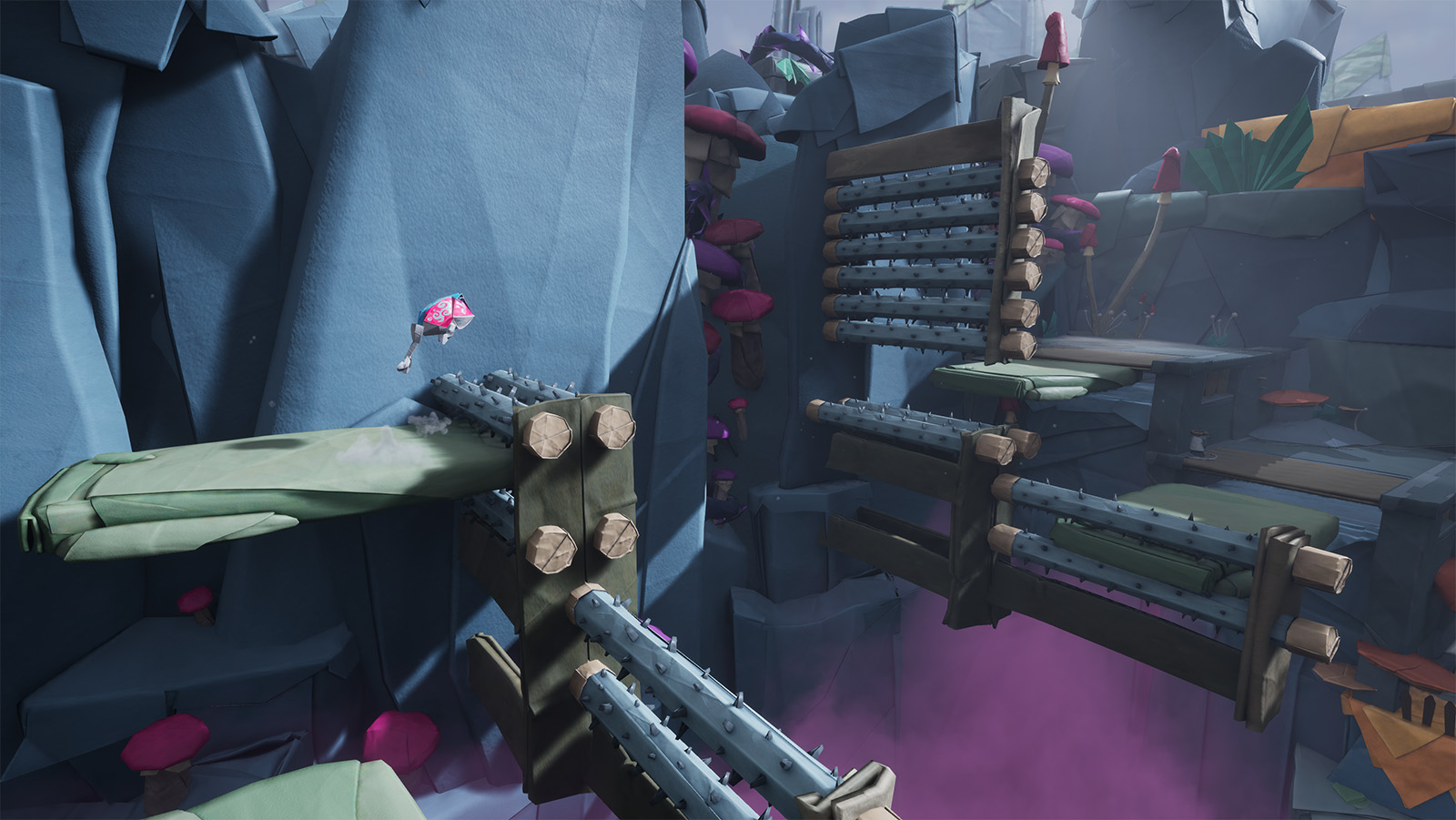
―Was there a reason why you chose the origami theme?
Yandhie: The inspiration for the origami theme actually came from the concept artists.
Yi Han: We are definitely not the only origami game out there. but when the concept artist team showed us the first pitch, it immediately felt like something different.
Origami, as we all know, is a very beautiful art in static form, so wouldn’t it be great if we could bring an origami world to life?
Yandhie: We solicited ideas from both the Singapore and Malaysia studios, and we had around 40 different submissions. The origami idea was very outstanding and we immediately knew that this was the game we wanted to make.
―Forty concepts are a lot! Can you share any stories as to how you made the choice to use the origami theme?
Yi Han: We needed to think about whether we could finish the game with the small team and meagre resources, but we have absolute confidence in our artists’ art and animations, and they could pull this off realizing the beauty of origami.
Yandhie: Hirogami started as part of the Full Game Challenge (where the studio makes everything needed for the game), so it wasn’t just about what the team wanted to make, but also to show the capability of the studio as a whole.
We felt that the origami theme would be able to put that front and center.
So that’s why the game we wanted to make a game that was unique not only from the gameplay, but also visually striking.
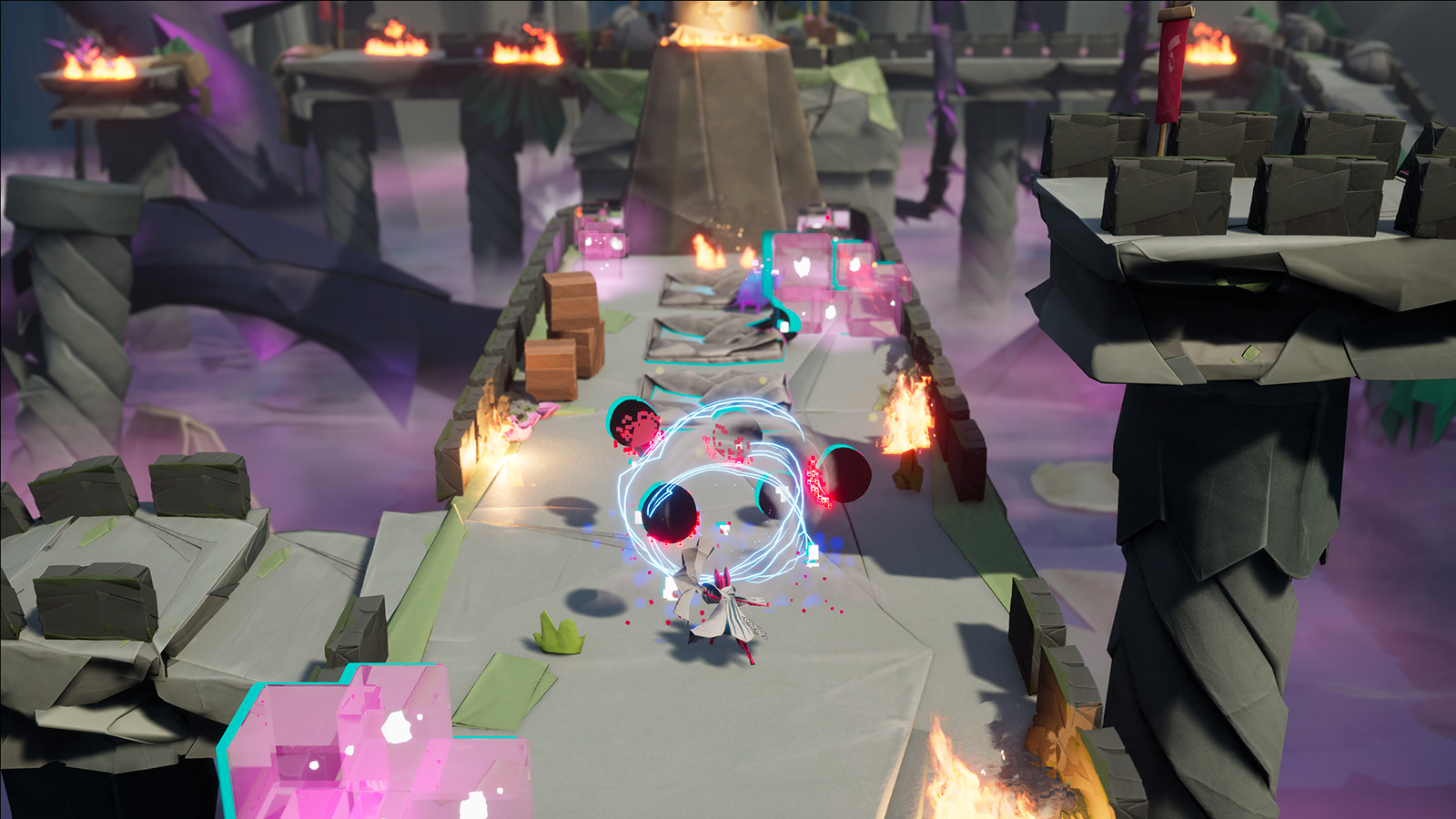
Things to look for and experience in Hirogami
―What particular part of Hirogami do you want players to pay particular attention to?
Tsubame: I have one from an audio perspective. The music in the game is composed to be delicate, while tense at the same time. We combined traditional Japanese instruments with modern methods to achieve this, creating a new sound that is always flowing. I think the strange, mystical feel of the music is a good match for the world of Hirogami.
I personally like Zone3 Misty Grove, music that plays in an elevated forest.
Yandhie: One of the first things Kakehashi Games (the game’s publisher) noticed was how beautiful the music was.
―Did you run into any sound-related problems?
Tsubame: There was some trial-and-error on what kind of audio would fit the game. How much of the mix should be traditional Japanese instruments? I had a couple of versions in mind while composing. I also kept in mind the balance of music and environmental sound effects.
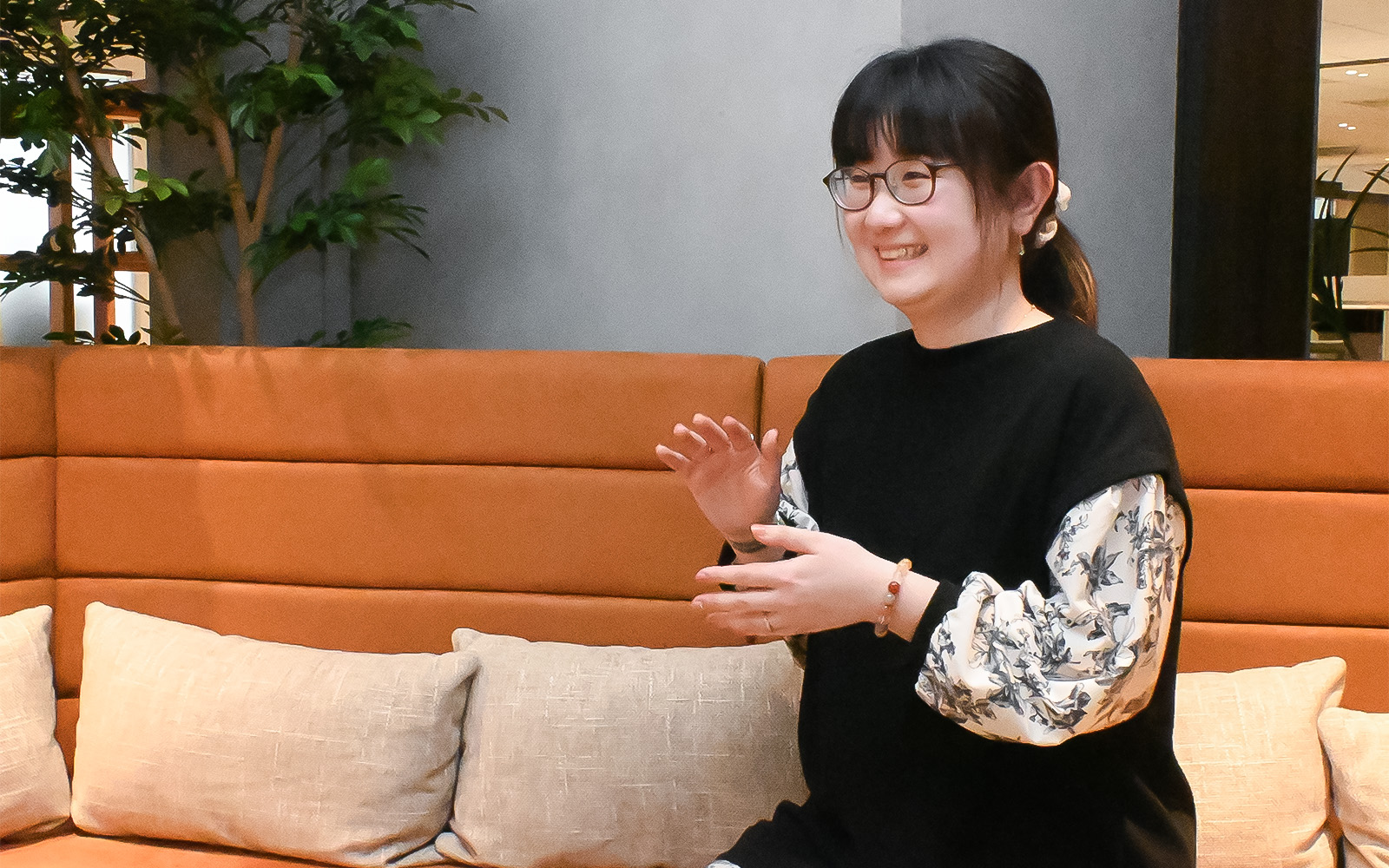
―Thank you! Is there anything else you want to share?
Yi Han: I mentioned this earlier, but I would like players to pay attention to the idea of transforming. I hope the player can enjoy the world of Hirogami, interacting with our unique mechanics by transforming into a variety of animal forms while listening to Tsubame-san’s music.
Yandhie: We want players to pay attention to the story too. We were inspired by movie studios and their approach to narrative, where players can just have fun with the game on a surface level. But we also put a bit of focus on the narrative to satisfy story-focused players who are looking for more depth. We definitely want that kind of player to explore the underlying themes behind the story.
My hint for you is to find the true meaning of perfection, or maybe creativity would be more appropriate. In any case, we would be delighted if you could feel it through the story as you play through the game.
―The player fights digital enemies in Hirogami. Did the idea of having the analog paper world fight the digital invaders exist from the very beginning?
Yandhie: Yes, it was something we considered right from the start of development. The idea came from a brainstorming session, the “cold-blooded” digital enemies would be a good antagonist to the physical art form that is origami. It was also a strategic choice from a game development point of view, because we could more efficiently use our assets. For example, each enemy we model can be used for the protagonist, as NPCs, and for the (digital version) enemies. We needed to think about these things as well since we had a small team.
―I found the characters’ names to be charming as well. Who named them?
Yandhie: The development team took turns naming the characters. We had naming rules for the different tribes, so you can guess what tribe the character is from by their names. We had a lot of fun making up the names, so the frogs in the frog tribe have unique names, and the same goes for the armadillos. There’s a theme for the human characters too like Shiori or Hiro.
Balancing the Weight of Paper!? Making Responsive Controls
―What parts of the action gameplay did you spend extra effort on?
Wesley: One of our primary focuses was responsiveness. The controls should feel as responsive as possible, but at the same time we wanted to make sure that each form still retained their unique identity. For example, when you transform into the ape, you should feel heavier than the armadillo or something. The team had meetings that focused on balancing the parameters for the controls so it feels good and fair to the player, which is very important in a platforming game.
Yi Han: One of the things we focused on was having our controls as responsive as possible without compromising the identity of the game.
For example, if you go super responsive, you can’t see the origami transformation, but if you make the animation too slow so players can see it, you lose responsiveness. We spent a lot of time tuning this and what’s in the game right now is really nice, so we hope players can enjoy the various transformations with the current controls.
Yandhie: We need to make sure the game didn’t feel unfair to the player. It’s important in an action game that mistakes feel deserved, and not because the game is making it difficult for the sake of being difficult. Sure, it’s difficult, but the game also shows the player a solution, so they keep on playing and getting better and better. When they finally manage to clear the challenge, they feel really good and happy with their achievement.
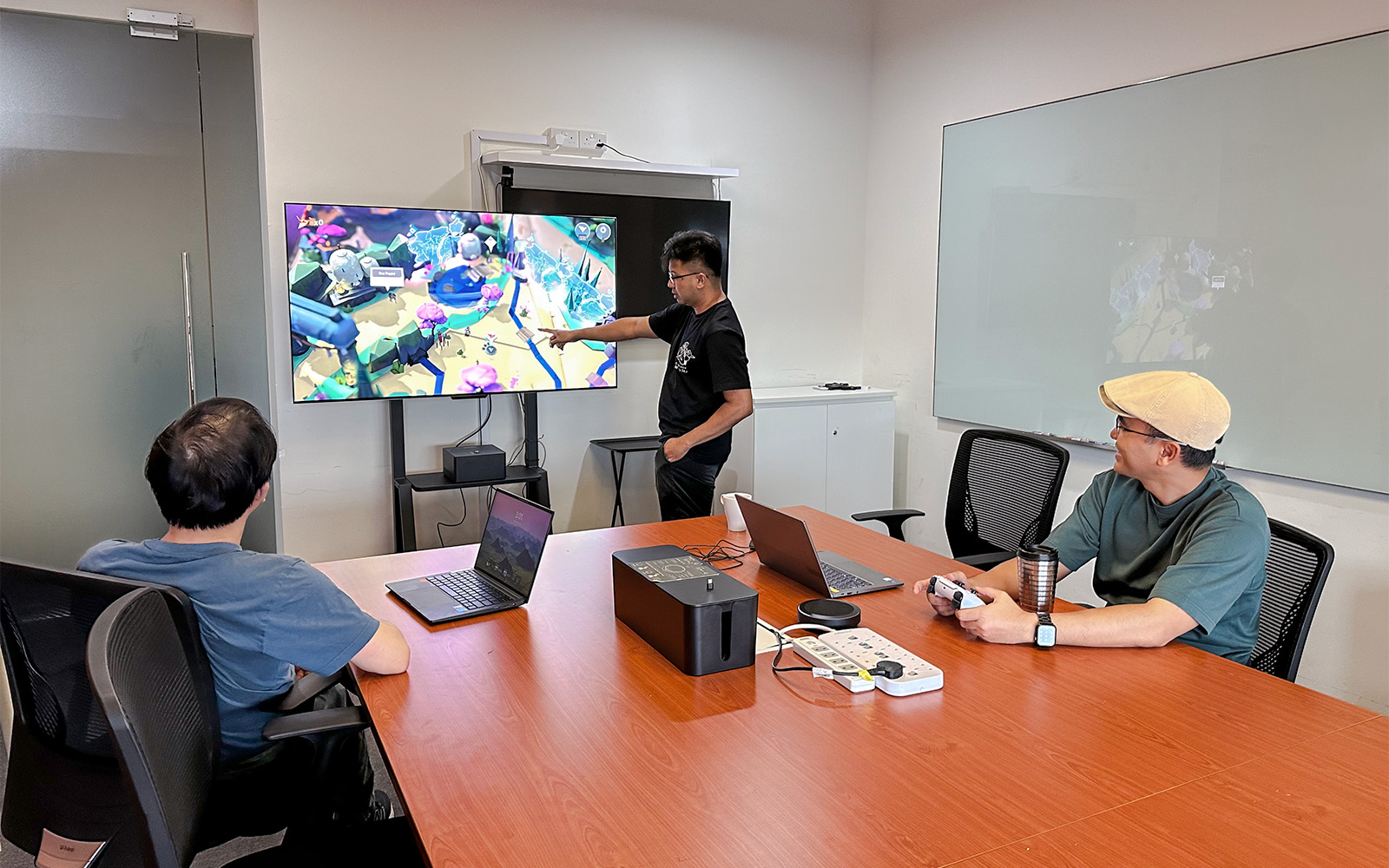
―What difficulties did you run into developing Hirogami?
Tsubame: It was a lot of work to create the game’s many assets with the deadlines were given. We then had to adjust the audio one by one, so debugging also took time. The hardest thing to tune was the audio distance falloff.
There are tons of things going on in the world of Hirogami, and time was spent adjusting the volume and falloff for the various game sounds so they wouldn’t obstruct the play experience. Audio issues like being able to hear things you’re not supposed to hear, or not being able to hear things you’re supposed to hear.
Yi Han: It was a challenge to fit what we wanted to make within the given time and budget. In the beginning, we wanted to have more transformations than we currently have, but we needed to maintain the quality line that was set so it was about balancing that with our ambitions.
Yandhie: For me, the biggest challenge was not just developing the game, but how to bring it to the players. Fortunately, we found a very good partnership with Kakehashi Games, and we learned a lot from them on how to not just complete a game, but how to bring it to market.
Player Reaction at Tokyo Games Show 2024
―Hirogami had a playable demo at Tokyo Games Show 2024. What did you learn from the people who tried it out?
Yi Han: I was actually not on site, but the team watching from Singapore was eagerly waiting to see what players thought. From what I remember, everyone was really happy to know that the booth was always occupied, and although the demo was very short, many of them wishlisted on Steam, so that really gave us confidence in the game.
Wesley: I was helping at the booth. Like Yi Han said, the booth was almost never empty, and people had fun. Even if they didn’t play the game, they would stop and watch other people play, and we even ran out of flyers. I think Kakehashi Games and our art staff did a pretty good job designing them. We actually used the feedback from the demo to improve the final version, so it helped immensely.
Tsubame: It was astonishing how people were playing with the game data I was editing the day before. It goes without saying, but I was elated that people were playing a game I made the music for. Some of them even said that the music was nice, which was motivating.
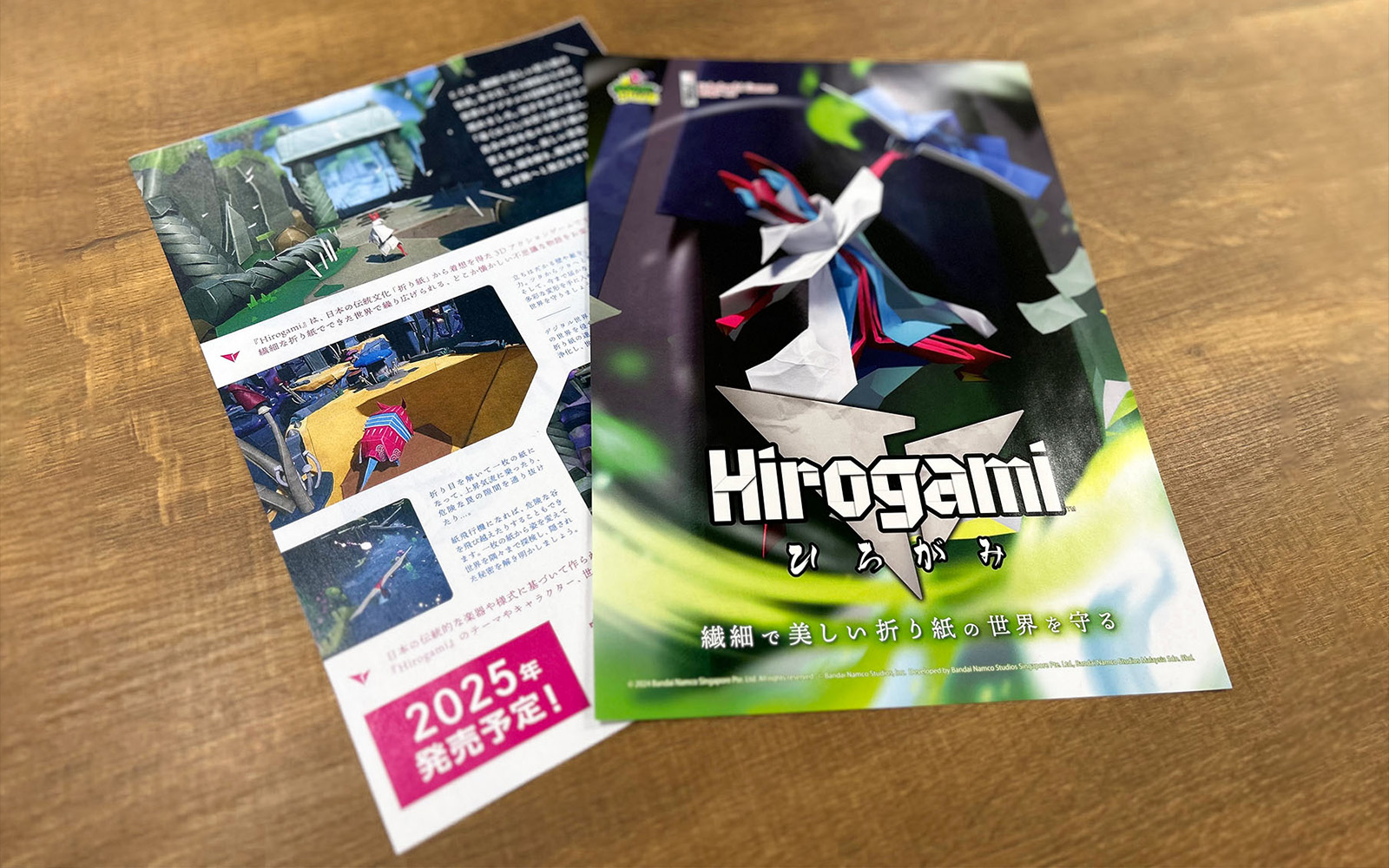
―Is there anything else about Hirogami you want people to know?
Tsubame: I worked on the game from Japan, and even though the other team members were 5000 or so kilometers away, they were wonderful to work with. Hirogami was made with a small team so I got the take on many roles and learn many skills. There were issues along the way, but I’m proud of the fact that we finished the game. This project was a very valuable experience for me as it was an opportunity for me to put all my effort into audio creation. I would love to work with this team again someday!
Wesley: I would like nothing more than to have players enjoy the game. You can say it’s the team’s blood, sweat and tears (laughs). I am looking forward to sharing the lessons we picked up throughout this project with the rest of the company, and to use the experience for future projects. Now I feel more confident in tackling harder, bigger projects in the future.
Yi Han: Hirogami is the product of our team’s efforts. You can say it’s our offering of “fun” to the world that we made by ourselves. And like how a single square piece of origami paper can transform into many things, I hope the game will bring some “transformation” to our players.
Yandhie: This is a very, very rare opportunity where we’re allowed to come up with a brand-new IP. Especially since the game industry recently is focusing on sequels, existing IPs, or remaking old IPs. Hopefully, this game came make us all proud that we could make something new with Hirogami.
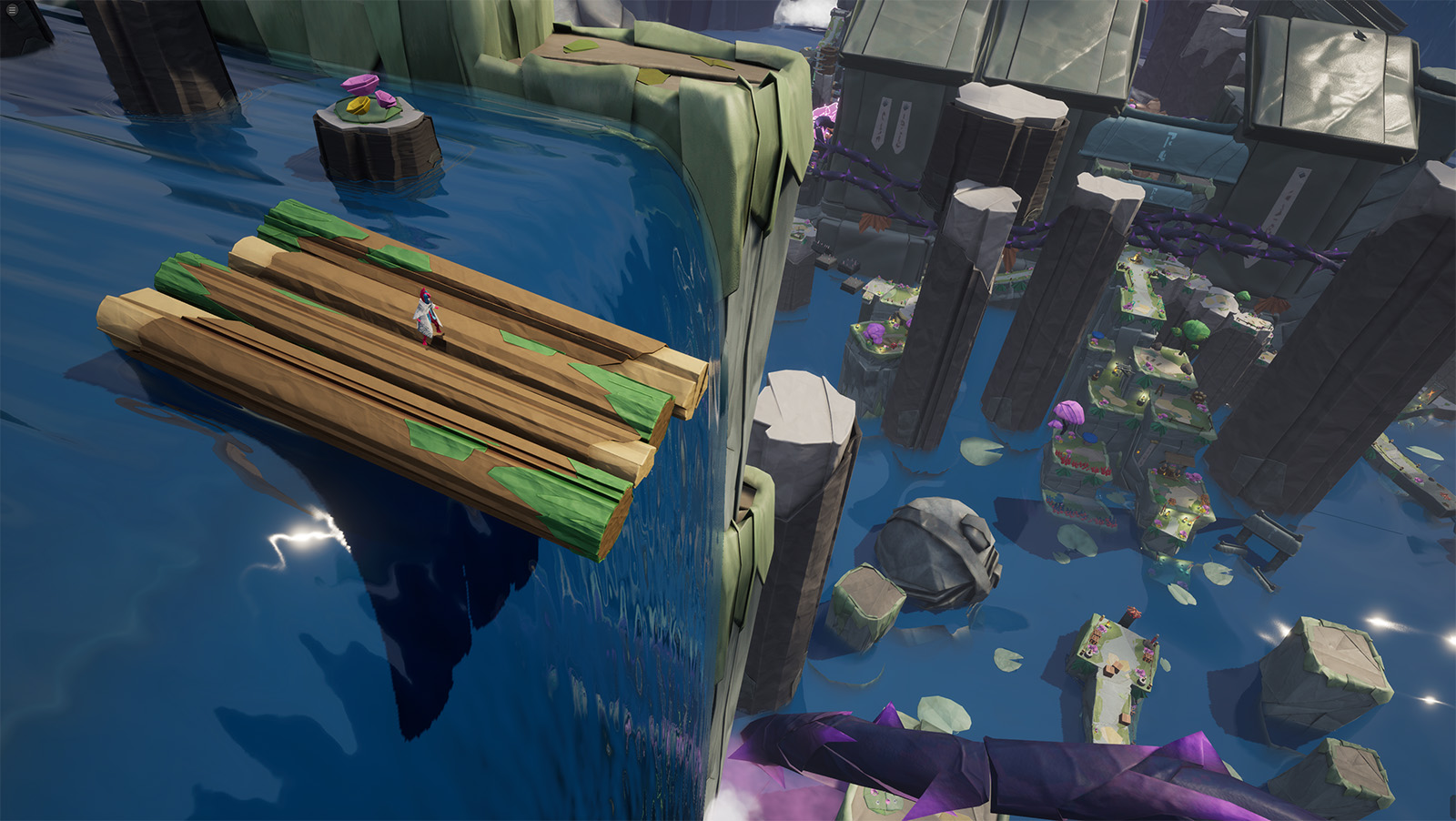
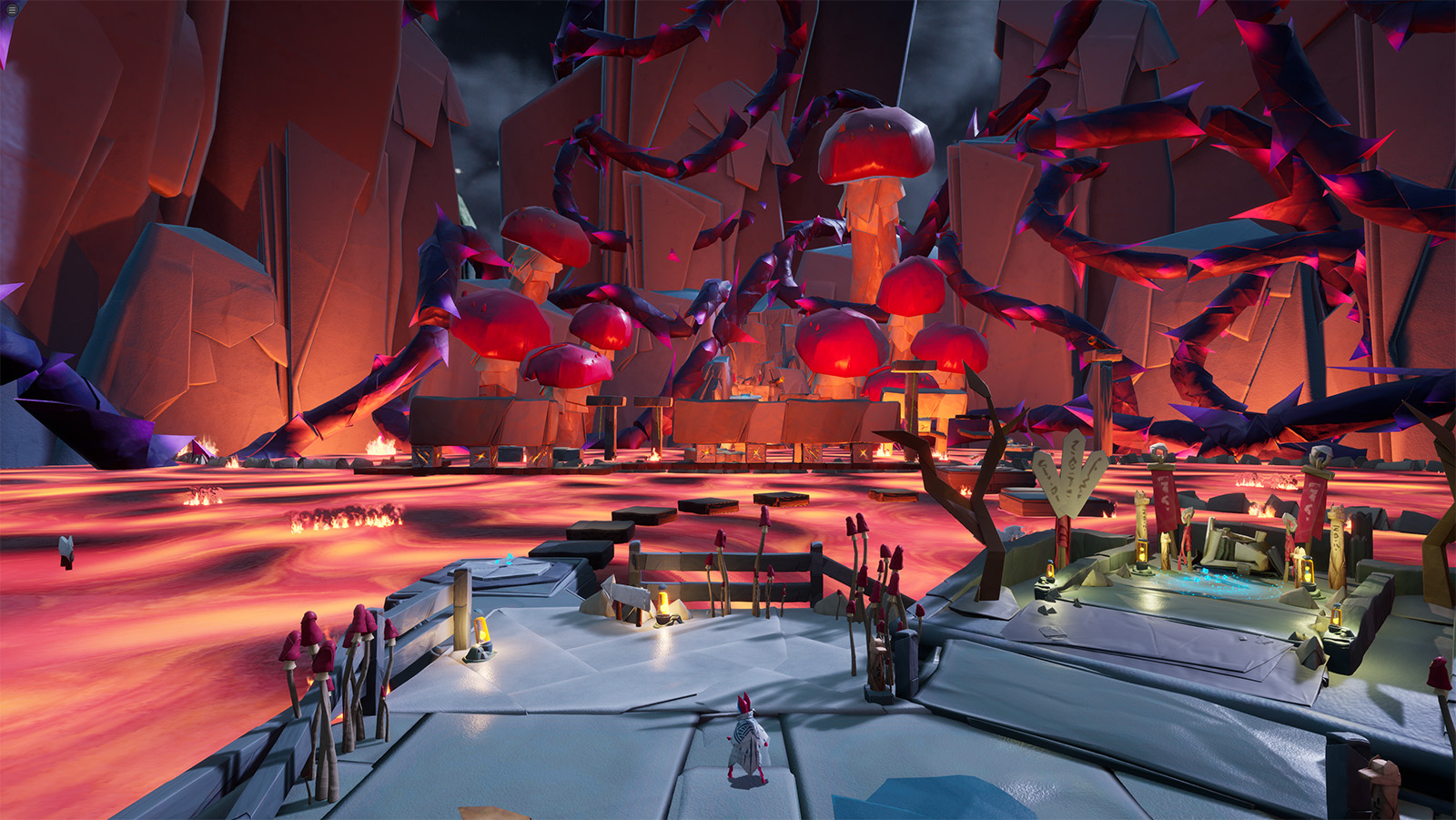
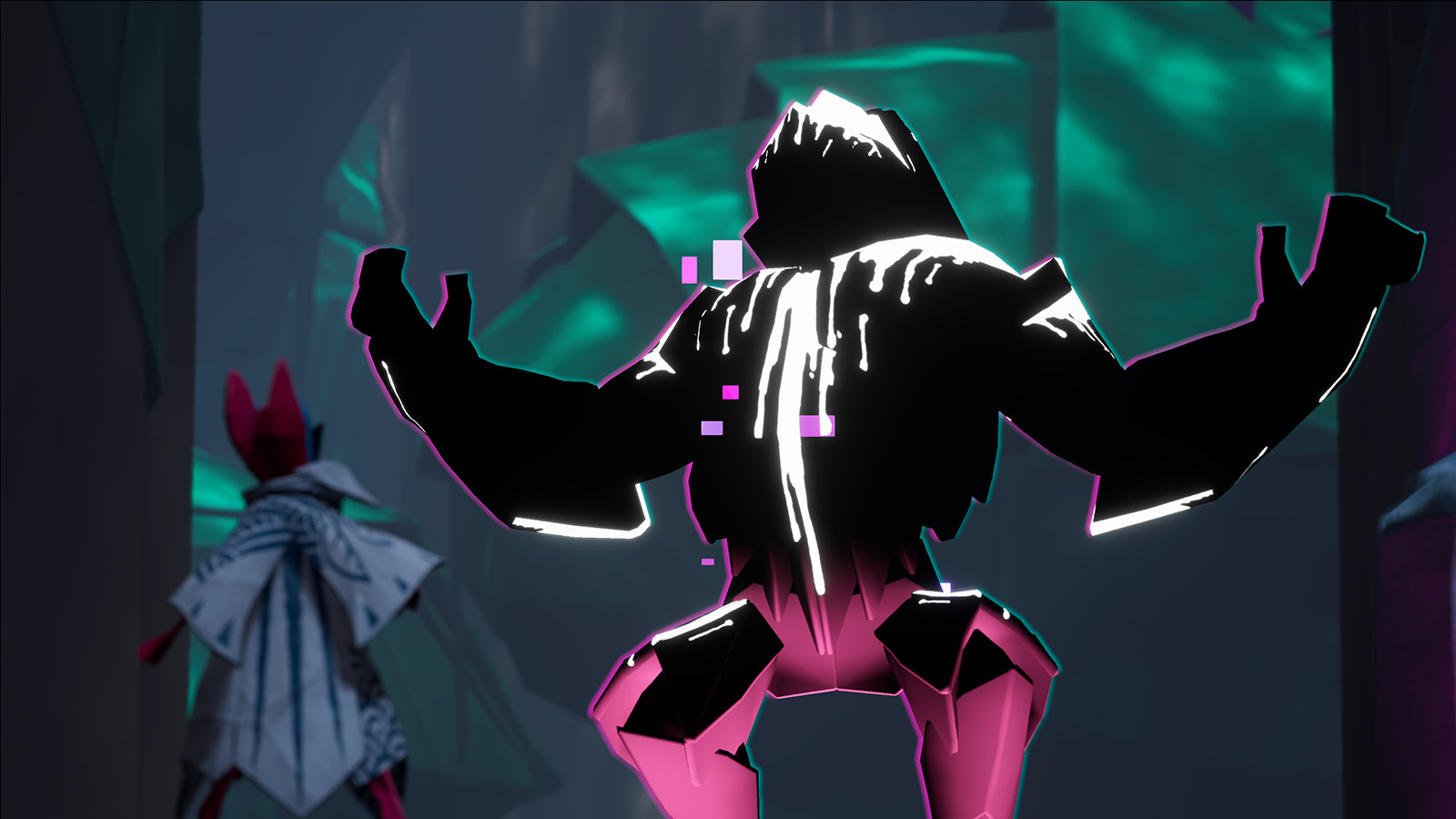
Messages from the Hirogami Team to Readers
―Lastly, please leave a message for everyone reading this article!
Yandhie: We couldn’t have made this game with any other team. All projects have their share of issues, but when you believe in it you can achieve it. I think that also aligns with some of the themes of the game’s narrative, which are “don’t give up” and “perfection is not the absence of flaws”. It could be that perfection is our ability to strive to better ourselves.
Yi Han: When I fold a paper crane, sometimes the fold is slightly off, or something is not perfect. The same applies to work. When you’re making a game, for example the visuals or the gameplay, there are things you really want to do, but don’t have the resources to polish it to perfection. So what I want players to see is, I hope everyone can see the beauty in imperfection and live for the simpler joys in life.
Wesley: It would be great if players just have fun with the game. I think that’s the goal of almost every single game developer. Give it a try!
Tsubame: Everyone put in a bit of themselves during the production of Hirogami. The worldbuilding, audio, story, all of it is filled with our passion for making games, so I hope players will pick it up, have fun with it, and hopefully have a lasting experience.
―Thank you for sharing such an incredible story!
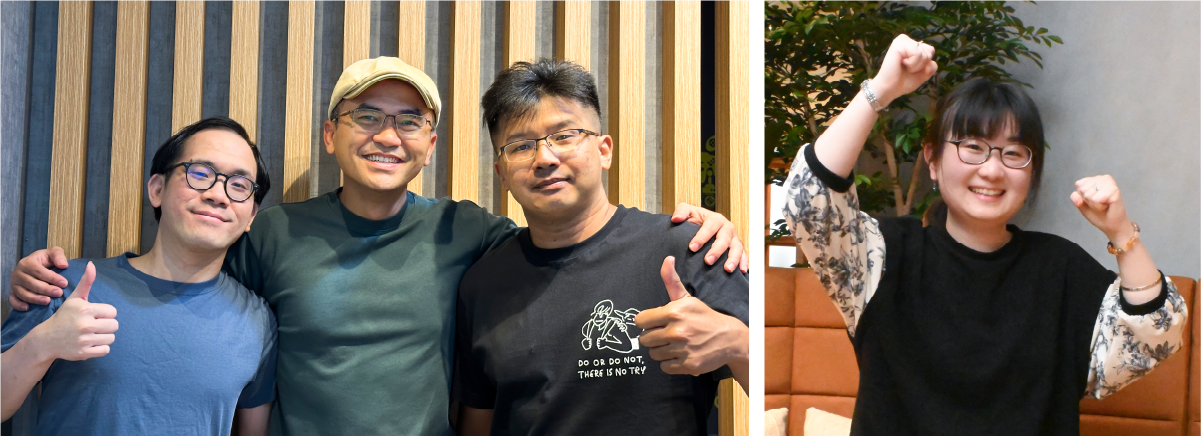
Planned release date: September 3, 2025 (September 4, 2025 in Japan)
Platform: PlayStation®5 / STEAM® / Epic Games Store
■Physical Version
Planned release date: October 23, 2025 (Japan)
Platform: PlayStation®︎5
©Bandai Namco Studios Inc.
© 2024 Bandai Namco Studios Singapore Pte. Ltd. All rights reserved. Developed by Bandai Namco Studios Singapore Pte. Ltd., Bandai Namco Studios Malaysia Sdn. Bhd. Published by Kakehashi Games




